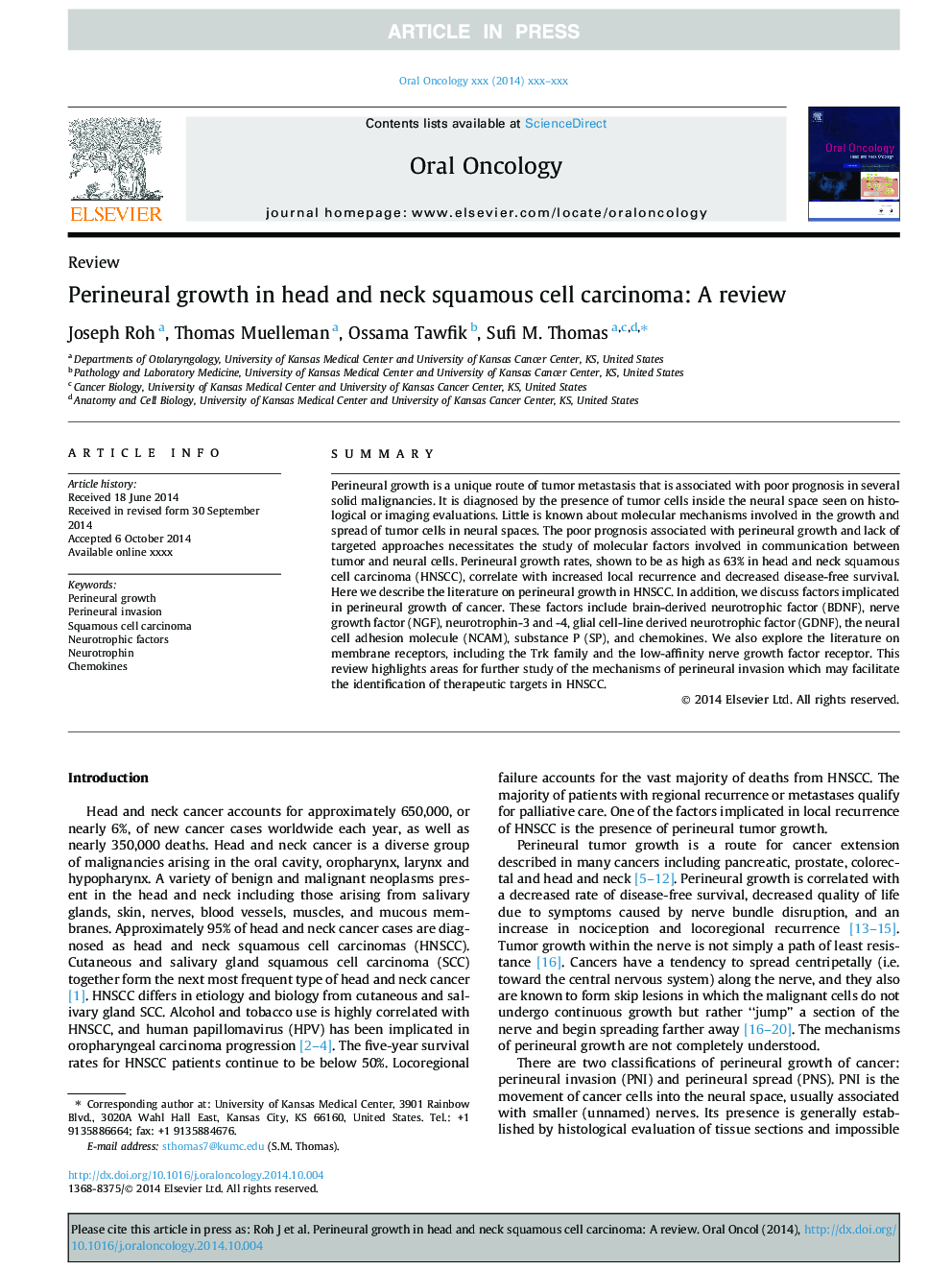| Article ID | Journal | Published Year | Pages | File Type |
|---|---|---|---|---|
| 6054929 | Oral Oncology | 2015 | 8 Pages |
Abstract
Perineural growth is a unique route of tumor metastasis that is associated with poor prognosis in several solid malignancies. It is diagnosed by the presence of tumor cells inside the neural space seen on histological or imaging evaluations. Little is known about molecular mechanisms involved in the growth and spread of tumor cells in neural spaces. The poor prognosis associated with perineural growth and lack of targeted approaches necessitates the study of molecular factors involved in communication between tumor and neural cells. Perineural growth rates, shown to be as high as 63% in head and neck squamous cell carcinoma (HNSCC), correlate with increased local recurrence and decreased disease-free survival. Here we describe the literature on perineural growth in HNSCC. In addition, we discuss factors implicated in perineural growth of cancer. These factors include brain-derived neurotrophic factor (BDNF), nerve growth factor (NGF), neurotrophin-3 and -4, glial cell-line derived neurotrophic factor (GDNF), the neural cell adhesion molecule (NCAM), substance P (SP), and chemokines. We also explore the literature on membrane receptors, including the Trk family and the low-affinity nerve growth factor receptor. This review highlights areas for further study of the mechanisms of perineural invasion which may facilitate the identification of therapeutic targets in HNSCC.
Related Topics
Health Sciences
Medicine and Dentistry
Dentistry, Oral Surgery and Medicine
Authors
Joseph Roh, Thomas Muelleman, Ossama Tawfik, Sufi M. Thomas,
